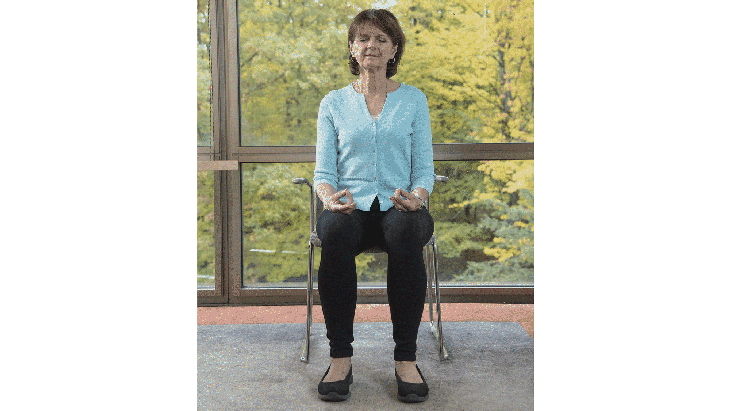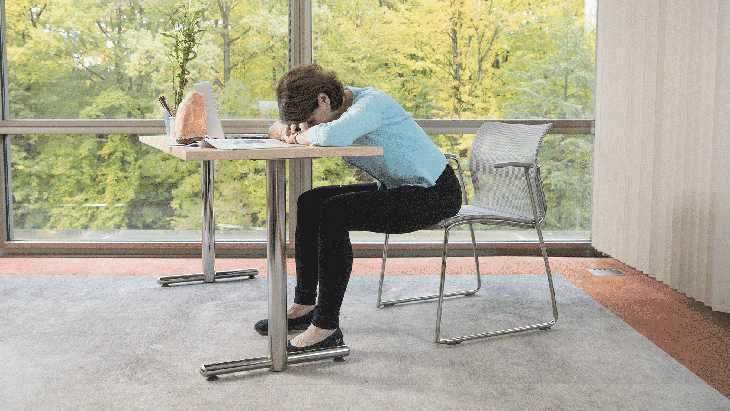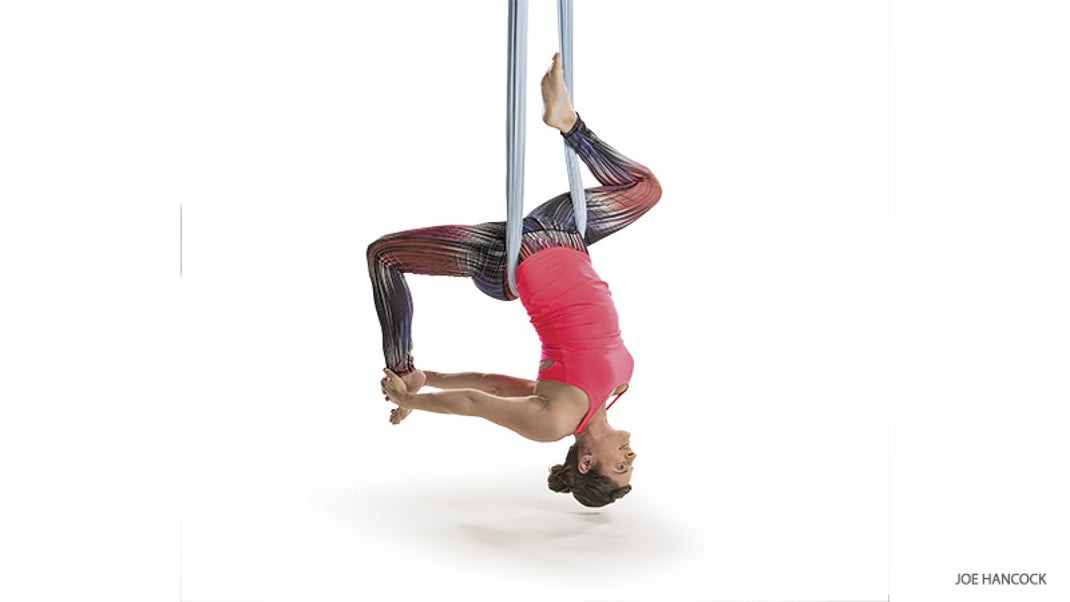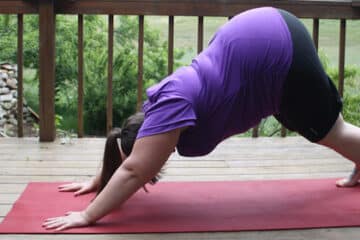If you have been feeling tired lately, there might be a reason why! You may have what is known as “adrenal fatigue.” You may not know it, but this condition can affect your daily life in many ways. You will learn all about adrenal fatigue and how to get help for the symptoms.
In our fast-paced, always-on culture, where phrases like “burned out,” “stressed,” and “exhausted” are regularly bandied about—humblebragged, even—it’s no wonder the term “adrenal fatigue” has become a health buzzword.
What is adrenal fatigue?
In fact, it’s been dubbed “the stress syndrome of the 21st century” and is described as being sick and tired of feeling sick and tired.
However, doctors are now calling it a nebulous, controversial ailment that blames overtaxed adrenal glands for a cluster of nonspecific symptoms, including chronic fatigue, sleep, and digestive disturbances, cognitive difficulties, and odd food cravings. (Your adrenals are the two triangular glands on top of your kidneys and are responsible for secreting the energizing hormones cortisol and adrenaline in times of stress.)
To be sure, people are reporting higher and higher levels of stress, says Jeffery Dusek, Ph.D., chief research officer at Kripalu Center for Yoga & Health, in Stockbridge, Massachusetts, and a research psychologist who has studied the body’s stress response with mind-body medicine pioneer Herbert Benson. Yet even though adrenal fatigue is sometimes diagnosed—and frequently self-diagnosed—the medical community largely denies that it is a real thing.
Both the Endocrine Society and the Mayo Clinic say the condition lacks proper scientific support, and a 2016 review of 58 studies, published in the journal BMC Endocrine Disorders, concluded: “there is no substantiation that ‘adrenal fatigue’ is an actual medical condition.” Detractors think symptoms are more likely due to well-recognized medical conditions like depression or hypothyroidism, and they fear that ascribing them to adrenal fatigue could delay critical treatment. (To be clear, true adrenal insufficiency, an autoimmune disorder called Addison’s disease, is rare.)
Dusek posits that Western practitioners might also feel hesitant to accept adrenal fatigue because it’s what he calls a “squishier” diagnosis, akin to irritable bowel syndrome, chronic fatigue syndrome, or gluten sensitivity. Other practitioners say the name “adrenal fatigue” is largely to blame for the confusion. “Adrenal fatigue sounds like you have these tired, sad little adrenal glands that can no longer make cortisol and adrenaline for you, so you feel sluggish,” says naturopathic and functional medicine doctor, Brooke Kalanick, ND, MS, LAc. “That’s not quite it. It’s more like chronic, unmitigated stress is making it so that your brain and adrenal glands can’t communicate as nature intended.”

Your body, on non-stop stress
One thing most experts agree on is that the adrenals play a pivotal role in maintaining everyday energy levels. To understand this, a quick neurochemistry primer is helpful: Cortisol is your main stress hormone. In healthy individuals, cortisol runs on a 24-hour rhythm, normally peaking around 5 a.m. and then slowly tapering throughout the day so it’s lowest at bedtime, says Kalanick. When you’re well-rested and your stress is in check, green juice and a few Sun Salutations should be enough to get you going in the morning. And falling asleep at night feels easy, thanks to the natural fall of cortisol, which coincides with the rise of melatonin—the body’s sleep hormone.
Shorter, more intense cortisol bursts—along with your other stress hormone, adrenaline—occur when the brain senses imminent danger. When that happens, a lightning-fast chemical cascade occurs along something called the hypothalamic-pituitary-adrenal axis, says Kalanick. The hypothalamus (the part of the brain that communicates with the nervous system) shoots a signal to the pituitary gland (the orchestra leader of the body’s various hormones), triggering a fight-or-flight response in an effort to spur the body into action, says Cynthia Ackrill, MD, an American Institute of Stress Fellow and life coach based in Washington, D.C. The galvanizing force comes from the adrenals, which pump out adrenaline so you can react—fast. As that initial hormone surge diminishes, the hypothalamus kicks off a second chain reaction, this time directing the adrenals to release cortisol to keep you vigilant. Once the danger has passed, the adrenals send a message back to the hypothalamus to calm down, and you return to the opposite of the fight-or-flight state—commonly referred to as “rest-and-digest”—which is the body’s preferred, restorative state.
But we live in a world saturated with stress, thanks to work, relationships, caregiving, overexercising, and all the shoulds we’re bombarded with. A post-election American Psychological Association study found that nearly half of Americans said they lie awake at night due to stress. Our brains are on perpetual high alert, with all of these stressors being interpreted as dangerous and triggering the continued release of cortisol. Millions of years ago, these cortisol bursts helped when we needed Red Bull–level energy to outrun a saber-toothed tiger. Yet as smart as the modern brain maybe, “it doesn’t think, ‘This stupid computer is giving me trouble.’ It thinks, ‘This tiger is going to attack me,’” says Wendie Trubow, MD, MBA, a functional-medicine gynecologist in Newton, Massachusetts.
When stress gets serious
How do you know when habitual stress has turned into something more serious with potentially long-term health consequences? Jeffery Dusek, Ph.D., chief research officer at Kripalu Center for Yoga & Health, encourages anyone who feels chronically stressed and notices trouble with sleep, cognition, digestion, or interpersonal relationships to see their health care provider for a physical.
A functional or integrative medical practitioner, in particular, can help determine whether you have hypothalamic-pituitary-adrenal axis dysregulation (HPA-D)—see the definition on page 44—as well as rule out look-alike conditions like hypothyroidism, anemia, and depression. HPA-D can be assessed by testing salivary cortisol levels four times during the day, which “allows us to see the timing and rhythm of cortisol output, as well as your total cortisol levels,” says functional-medicine doctor Brooke Kalanick. Your health care practitioner should test other key adrenal hormones—such as pregnenolone and DHEA—as well as your thyroid hormone levels and progesterone and estrogen (in women). At the appointment, discuss your energy and stress levels, nutrition, appetite, caffeine use, food cravings, and sleep habits.
If you have been calling your symptoms “burnout,” it’s worth noting that burnout is technically a work-related condition. It results in a trio of symptoms: cynicism; feelings of ineffectiveness; and exhaustion.
That’s what Donna Brooks, 58, a yoga therapist and somatic movement educator likely had as she constantly pushed to achieve the perfect poses in asana and foster a magical ambiance in class. “Yoga is supposed to ultimately be relaxing, but creating a space for what people think yoga is supposed to be can be stressful,” she says. “A lot of yoga teachers feel pressure to be at the top of their games, which creates a lot of stress and strain—physiologically and emotionally.” A functional-medicine practitioner eventually tested Brooks’s cortisol levels—they were high—but high cortisol is not synonymous with adrenal malfunction. Still, her healing plan was very similar to that of someone diagnosed with HPA-D: plenty of self-care by way of adaptogens (stress-reducing herbs), somatic yoga (slow, easy movements designed to soothe the nervous system), and a wholehearted effort to step away from her perfectionistic tendencies.

The Cost of Chronic Stress
Like the villagers in Aesop’s fables who eventually start ignoring the little boy who cried wolf, the hypothalamus becomes less sensitive to adrenal feedback when stress is constant, and cortisol levels essentially go rogue. When this happens, it becomes harder to keep cortisol output on its normal circadian timing, says Kalanick, “which can result in periods of inappropriately high or low cortisol.” In some people, cortisol surges at night (when it should be low) so you lie there, worn out but wide awake. In others, it plummets in the morning (when it should be high), making it feel impossible to get out of bed.
The effects of this relentless cortisol dump usually first manifest as troubled sleep and fractured energy levels, but other red flags include headaches, irritability, and cognitive difficulties—a combo sometimes called “brain fog”—all due to a lack of restorative sleep. Many women also experience menstrual irregularities, adds Trubow, who was trained as a Western obstetrician-gynecologist before turning to functional medicine. Excess cortisol inhibits ovarian function because a habitually stressed brain thinks danger lurks around every corner. “Survival trumps procreation,” says Trubow, “and your body focuses on providing energy to your legs to run—not to your ovaries.”
Digestive issues are also common, as excess cortisol decreases stomach-acid production. “You can’t properly break down food,” Trubow says, leaving you gassy, bloated, or with diarrhea. After prolonged periods of high cortisol levels, you may also experience nutrient deficiencies. There’s also a good chance you’ll experience food cravings. Yearnings for salt are common, mainly because the adrenal glands produce a hormone called aldosterone, which maintains the body’s sodium balance (and, consequently, blood pressure). The sodium imbalance that can result from excess adrenal hormones leads to salt cravings, and can also cause low blood pressure, according to Mayo Clinic. Unmitigated cortisol also leads to fat accumulation around the midsection, says Trubow. Increased cortisol can cause spikes in blood sugar, which is ultimately stored in the abdomen as fat.
This constellation of symptoms is commonly attributed to adrenal fatigue, but experts say the more accurate term is hypothalamic-pituitary-adrenal axis dysregulation (HPA-D). “The HPA axis, this pathway linking the brain and the adrenals, is well known and has been studied extensively,” says Ackrill, adding that decades of research verify that an onslaught of stress hormones—the ones controlled by the HPA pathway— can upset every process in the body, from energy production and sleep to sex hormone production and immune system repair.
Whether you call it HPA-D, adrenal fatigue, burnout, or chronic stress, one thing is for sure: There’s a good chance your nervous system is, well, way too nervous. Self-care is critical, says Ackrill. In fact, she calls it non-negotiable for physical and emotional resilience. “Somehow, our culture has made us feel like better care is selfish, so we ignore our body’s check-engine lights and end up taking care of our yoga gear better than we do ourselves,” she says.
Any of the following practices can be used to jumpstart the healing process and help you regain your energy. Just be careful not to try to adopt them all at once. “You don’t want the process of de-stressing to feel stressful,” says Kalanick.
PROP YOUR PRACTICE
Now is not the time to practice intense vinyasas or push yourself through fast, hot yoga classes, which are too strenuous for someone with HPA-D. But you do need your yoga practice more than ever if you are diagnosed with the condition. Roger Cole, PhD, a sleep research scientist and certified Iyengar Yoga teacher in Del Mar, California, recommends starting with more passive, prop-supported restorative yoga, “which allows you to approach classic restful poses, yet completely let go because you have additional support,” he says. Try folded blankets beneath your pelvis in Viparita Karani (Legs-up-the-Wall) or blankets and bolsters under your head, back, and knees in Salamba Supta Baddha Konasana (Supported Reclining Bound Angle Pose).
TRY YOGA NIDRA
If you love the way you feel when you emerge from Savasana (Corpse Pose) feeling recharged yet peaceful, yoga Nidra may be a great choice for you. This simple, guided meditation ushers you into deep-sleep brainwave territory, but with a trace of awareness. “You wake up after 45 minutes feeling like you’ve slept three hours,” says Karen Brody, author of Daring to Rest: Reclaim Your Power with Yoga Nidra Rest Meditation, “so you get all the science-backed benefits of meditation, plus the benefits of sleep. It’s a 21st-century power nap.”
Because yoga Nidra involves deep breathing, it triggers the relaxation response. “Your brain shifts from an awakened state, with lots of brain activity, to a more relaxed state, where the calming, mood-regulating hormone serotonin is released,” says Brody. From there, you eventually proceed toward an ultra-restorative brainwave state, where thoughts slow and excess cortisol gets scoured from your system. “In our go-go-go culture, very few people are entering this state on a regular basis,” says Brody, “and as a result, our bodies are not powering down and getting the opportunity to restore themselves.”
BE CHOOSY ABOUT WHAT YOU CONSUME
Headlines scream alarming news and violence; your social media feeds are likely filled with divisive political views. “Taking in too much bad news sends an overdose of danger signals to the brain,” says Ackrill. Limit your intake of soul-crushing headlines and up your daily dose of positive news via websites like dailygood.org or goodnewsnetwork.org.
CONNECT WITH OTHERS
The feel-good hormone oxytocin is secreted during times of joy—like when you have an orgasm, if you’re breastfeeding, and even when you’re hanging out with your crew. When we’re in the presence of friends whom we feel supported by, women, in particular, get a rewarding jolt of oxytocin—because those are the people who helped us survive and raise kids back in prehistoric times, explains Denver-based psychotherapist Sheryl Ziegler, PsyD. Find friends with whom you can talk, vent, and laugh—especially if you’re female. “Women experience oxytocin’s effects more strongly than men, as estrogen is an oxytocin amplifier,” she says. The good news is that most patients end up working their way back to health with a combination of mind-body stress-relief techniques, dietary adjustments, herbs, and healing movement.
How Ayurveda Helps with Adrenal Fatigue
From an Ayurvedic perspective, hypothalamic-pituitary-adrenal axis dysregulation (HPA-D) is the manifestation of an imbalance of Vata, one of the three different energies, or doshas, in Ayurvedic medicine. (The others are pitta and Kapha.)
“There are two types of data,” says certified Ayurvedic practitioner John Douillard, DC, founder of LifeSpa.com: There’s prana Vata, which moves up into the head and supports nervous system function, and Apana Vata, which moves down into the pelvis, supporting adrenal, reproductive, and eliminative functions. “If the mind is stressing the body, the downward-moving data will be redirected upward to handle that stress,” leaving the adrenal glands depleted. (This also explains why many people experience stomach woes when they’re stressed, and why women can develop menstrual irregularities.)
Douillard says most HPA-D patients feel significantly better within two weeks of starting a combination of the following Ayurvedic healing approaches:
- Load up on seasonal produce. Fruits and veggies carry ever-changing microbes from the soil into your gut to boost immunity, which drops during times of stress.
- Practice forward-bending yoga postures. These push Apana Vata back down.
- Meditate. A regular meditation practice creates a sattvic, or peaceful, state of mind.
- Give yourself abhyanga, or oil massage. Not only does this foster a connection with your body, but it also helps to restore hormonal balance and improve immunity, according to Ayurveda. “We have at least 1,000 sensory neurons per square centimeter of our skin,” says Douillard. “When you massage just one arm with oil, you’re calming more than a million neurons.” Massage also boosts oxytocin, and oiling the skin keeps the skin microbiome healthy, which in turn supports immunity.
- Take adaptogenic herbs. “The beauty of adaptogens is that you can utilize them whether your cortisol is high, low, or all over the place,” says functional-medicine doctor Brooke Kalanick, who recommends Rhodiola for preventing stress-induced adrenaline activity and combating the immune-lowering effects of long-term stress. You can also try holy basil (tulsi) to normalize blood sugar, increase endurance, and improve your overall sense of well-being.
5 Seated Poses to Break Your Fight-or-Flight Response
Judi Bari, a yoga therapist and yoga program manager at the Cleveland Clinic Wellness Institute in Lyndhurst, Ohio, developed the following sequence to help break the fight-or-flight response. “The goal is to relax tension in your muscles, steady your breath, and quiet your mind,” she says. “This combination slows the release of stress hormones.” The best part? Doing this affects all of your body’s systems, allowing them to operate more efficiently and in a healthy way. You can do this sequence all at once (before bed is a good time), or practice the poses individually throughout the day.
1. Seated Mountain Pose
 Reprinted with permission, Cleveland Clinic Center for Medical Art & Photography © 2018. All Rights Reserved
Reprinted with permission, Cleveland Clinic Center for Medical Art & Photography © 2018. All Rights Reserved
Sit toward the front of a sturdy chair with your spine lengthened, chin slightly tucked, and your shoulder blades pulled toward each other gently. Pull your navel center toward the back of your spine, which will lengthen your lower back. Make sure your feet are hip-width apart and your knees are at a 90-degree angle to your hips. (If your feet don’t touch the ground completely, use yoga blocks or books to rest your feet flat.) Hold your hands facing upward, and place the little finger and ring finger at the tip of the thumb, gently keeping the other two fingers stretched for Prana Mudra. Rest your hands below your navel, supported on your lap. Use as little muscle as possible, and close your eyes if you feel comfortable. Take a few normal breaths, then inhale for a count of 4, pause for a moment, and exhale for a count of 6, then pause for a moment. Do this 5 times, return to your normal breath pattern for a few minutes, then repeat another 5 times. Set an alert on your daily calendar to do this breath for about a minute several times during the course of your day.
The benefit: The combination of this supported seated pose, gentle diaphragmatic breath with a longer exhale, and the mudra will help inspire a relaxation response.
2. Seated Supported Child’s Pose
 Reprinted with permission, Cleveland Clinic Center for Medical Art & Photography © 2018. All Rights Reserved
Reprinted with permission, Cleveland Clinic Center for Medical Art & Photography © 2018. All Rights Reserved
From Seated Mountain Pose, lengthen your spine, keeping your navel moving toward your spine and pressing your feet into the ground. With an inhale, lean forward, and rest your elbows and forearms on a table or desk. Gently lower your head, and use either your hands or a folded towel under just your forehead so that your nose and mouth are completely clear. Tilt your head slightly downward so that you feel completely supported. Rest here for a few breaths, then draw your attention to your back and breathe deeply, gently working toward feeling your lungs moving low in your back. Breathe as deeply as you can while staying comfortable.
The benefit: This posture stimulates blood flow to the lumbar area and helps to tone the vagus nerve, a fundamental component of the parasympathetic nervous system.
3. Seated Cat Curl
 Reprinted with permission, Cleveland Clinic Center for Medical Art & Photography © 2018. All Rights Reserved
Reprinted with permission, Cleveland Clinic Center for Medical Art & Photography © 2018. All Rights Reserved
Return to Seated Mountain Pose, and place your hands on your thighs, palms facing down. First, take five grounding deep breaths here. On your next exhalation curl your back like a cat, trying to reach the back of your chair without touching it separating your shoulder blades, and tucking your chin so that you look toward your belly button. On an inhalation, lengthen your spine back to Seated Mountain Pose. On your next exhalation, keep your chin gently tucked and lean forward, arching your spine and pressing your hands into your thighs so they hold some of your body weight. As you inhale and come back to Seated Mountain take a full mindful breath and notice how you feel.”Repeat this Cat Curl movement 3 times, then finish by sitting in Seated Mountain Pose for a few breaths. Try this after you have been sitting longer than an hour.
The benefit: Seated Cat Curl will help soften the muscles in your front and back body, relaxing tension and supporting your nervous system. It stimulates blood flow through your torso, helping to move more oxygenated blood through your system, boosting energy as a result.
4. Seated Double-Legged Forward Fold
 Reprinted with permission, Cleveland Clinic Center for Medical Art & Photography © 2018. All Rights Reserved
Reprinted with permission, Cleveland Clinic Center for Medical Art & Photography © 2018. All Rights Reserved
From Seated Mountain Pose, move to the front edge of your chair. Lengthen your spine, and draw your navel toward your back body as you extend one leg and then the other in front of you with your heels on the ground, feet flexed. On an inhalation, slowly start to hinge at your hips, pressing your hands into your thighs to take some pressure off your back, lengthening your spine, and keeping your chin gently tucked with your neck elongated. Stop at the point where you feel resistance, and exhale. Stay here for a full breath or two. Then, on your next exhalation, see if you can lengthen your spine, even more, allowing yourself to go deeper into the stretch. Stay here for a few breaths or until you feel like you’ve had enough. Try this if you need to slow yourself down a bit or have been sitting for more than an hour.
The benefit: In this back-body stretch, visualize tension and irritants leaving your body through the bottoms of your feet as you exhale. This calms the mind and eases physical stress.
5. Easy Seated Pose with Nadi Shodhana (Alternate-Nostril Breathing)
 Reprinted with permission, Cleveland Clinic Center for Medical Art & Photography © 2018. All Rights Reserved
Reprinted with permission, Cleveland Clinic Center for Medical Art & Photography © 2018. All Rights Reserved
Sit in a comfortable, Seated Mountain Pose this time rest against the back of your chair with a lengthened spine. Take a few breaths here, then move into alternate-nostril breathing: Close your right nostril with your thumb, (with the option of putting your index and middle finger on your forehead third eye area) and breathe in deeply with your left nostril. Then, close your left nostril with that same hand third and fourth fingers, and breathe out through your right nostril. Breathe in a sense of calm peaceful energy and exhale anything that doesn’t serve you in this moment to release. This is a single cycle. Repeat this cycle 5 times, then return to your normal breathing pattern for a few breaths. Finish with another 5 cycles of Nadi Shodhana. Try doing this if you find yourself getting anxious.
The benefit: This breathing exercise calms stress and anxiety by lowering your respiratory rate and balancing your brain’s hemispheres.
Conclusion:
You can do these poses at any point in your day to help you feel calmer and more relaxed. You can also do them together as a sequence with no breaks between movements if time is of the essence, or there’s one pose that really speaks to you today.



